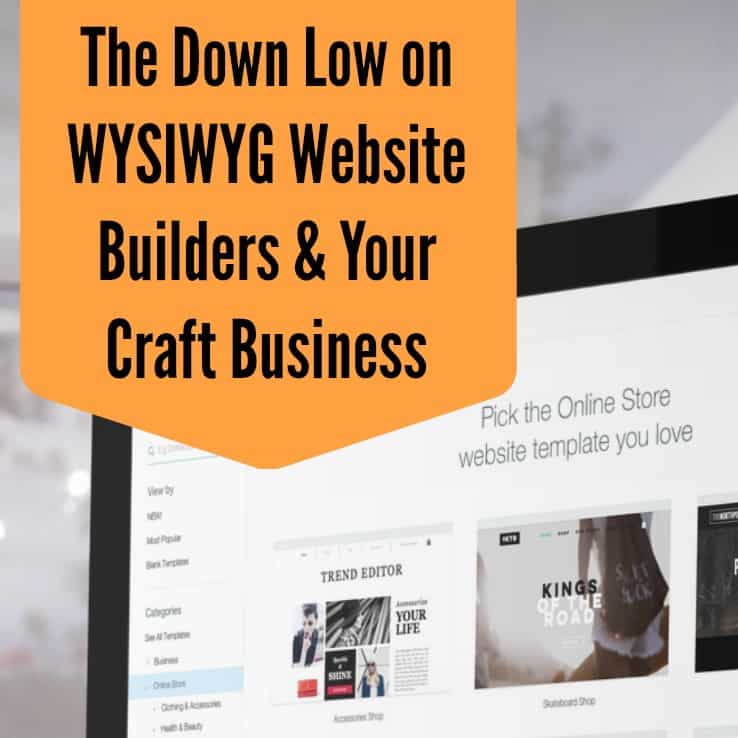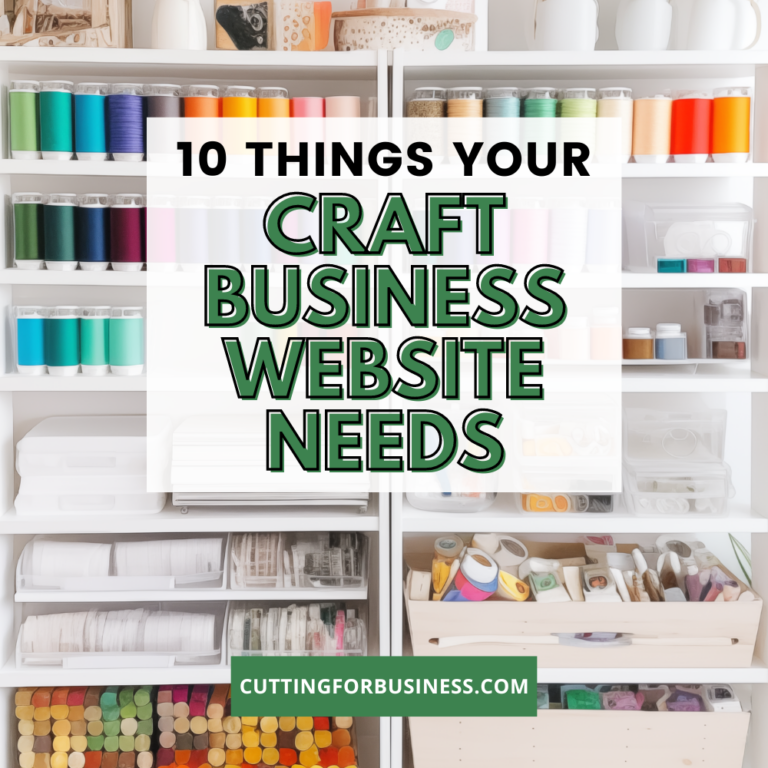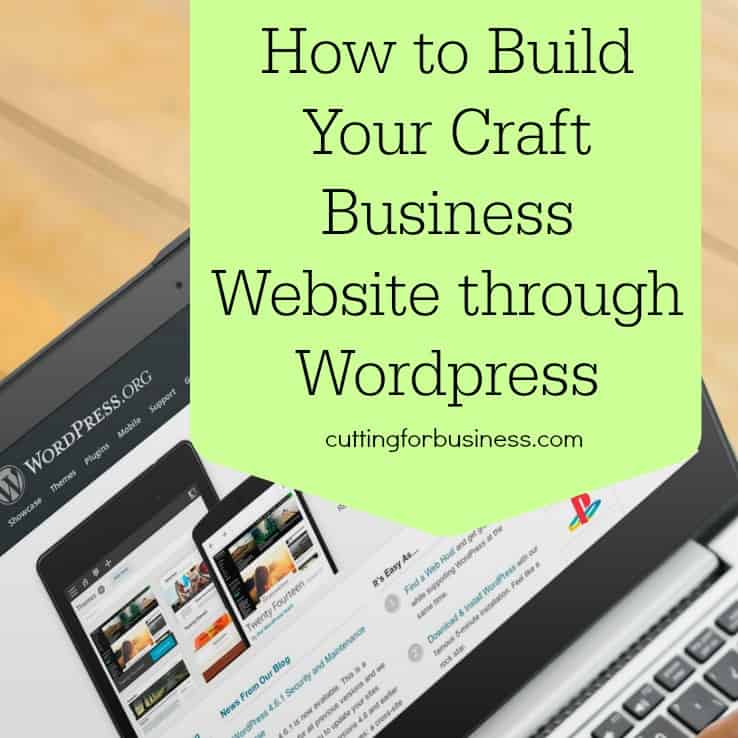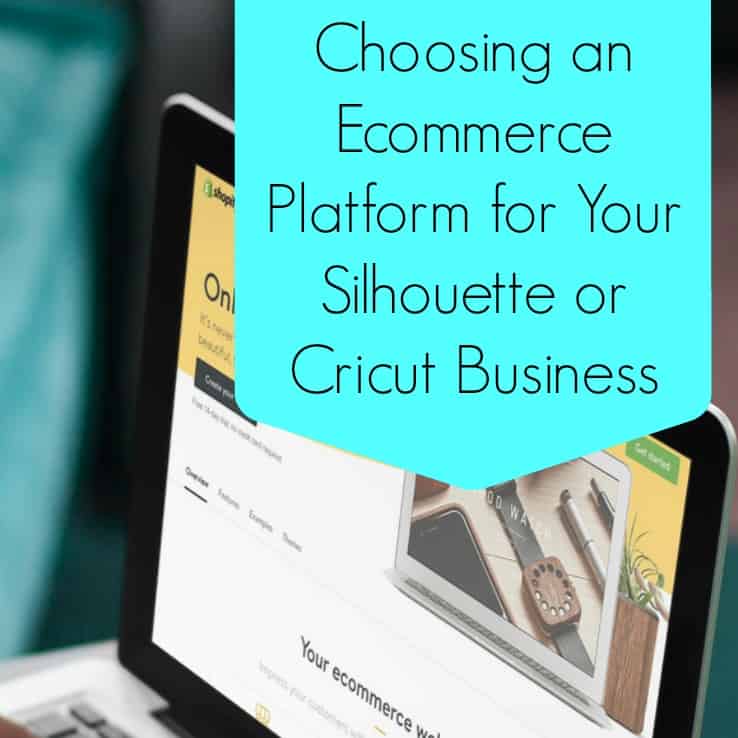FAQ: What is a Domain Name & Why Do You Need One?
Affiliate Disclosure: As an Amazon Associate I earn from qualifying purchases. Additionally, I may get commissions for purchases made through other affiliate links in this post.
What is a Domain Name?
A domain name is a website address. For example, my domain name is cuttingforbusiness.com.
Why Do I Need a Domain Name?
Here are a few reasons you need a domain name:
- To prevent someone else from getting it. You should reserve the domain name related to your business. Even if you don’t want to use it now, you’ll want to own it so no one else gets it.
- To use for your email. I’ve mentioned before that I strongly recommend using your domain. It is more professional to have an email address of sarah@sarahscrafts.com than sarahscrafts@gmail.com. (And, if you want to use Gmail, you can forward your domain email to your Gmail account for free.)
- To redirect to your store. It’s tough for customers to remember ‘yourstore.etsy.com’ or ‘facebook.com/yourshop’. The easiest way to fix this is to purchase a domain, then forward from the domain to your shop.
- To grow into. You might not want your own website right now, but later in your business you might want one. Also, you don’t have to put a whole web store together right now. You could have a single page website with links to your store and social media.
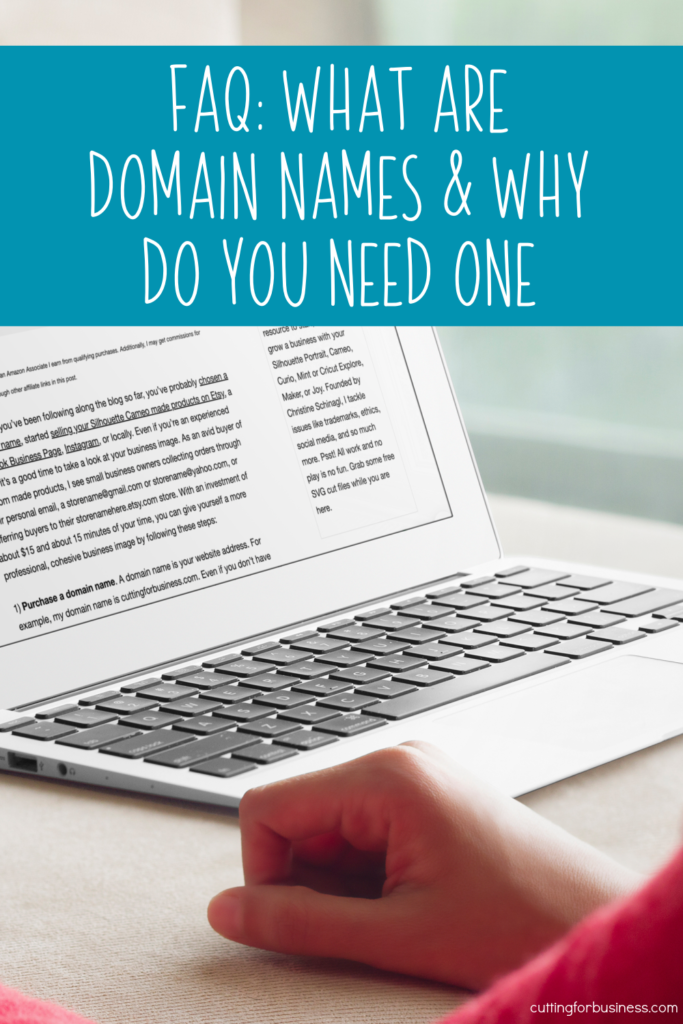
How Much Do Domain Names Cost?
Pricing varies for domain names. It is generally $10 to $15 per year for a domain name. Domain names have to be renewed yearly. If you do not renew your domain name on time, someone else can claim your domain.
What is the Best TLD?
TLDs are the ending of the domain. For example, .com and .org are widely known TLDs. I recommend you purchase the .com version, but there are hundreds of other options.
Where Can You Purchase a Domain?
Domain names are purchased at registrars. Some of them include: GoDaddy, Namecheap, Google Domains and more. Personally, I use and like GoDaddy. Mr. Cutting for Business uses and likes Google Domains.

Tips for Buying a Domain Name
Buying a domain name is similar to choosing a craft business name.
- Keep it short and sweet. Honestly, the shorter your domain name – the better. For example, a store called Tumblerific would use tumblerific.com instead of tumblerificstoreandgifts.com.
- Proofread it written out. For example, ‘thosewhoread.com’ is not a good domain name because of the word inside it. Unfortunately, social media networks and search engines will pick this up and it will become an issue.
- Skip the dashes. Dashes are hard to remember and awkward. Just skip them altogether. For example, I chose cuttingforbusiness.com rather than cutting-for-business.com.
- Consider adding a keyword. While it won’t be possible for all craft businesses, a keyword in your domain name can help customers know exactly what you sell. For example, I would expect glittertumblers.com to sell glitter tumblers. But, make sure your domain name and business name leaves room for growth. If you know you want to expand beyond glitter tumblers – don’t name your business glittertumblers.com.
- Steer clear of trademarks. You can’t use someone else’s trademark in your domain name (or business name). For example, onesiesbyme.com isn’t a good domain name since onesie is trademarked to the Gerber Company.
Since 2015, Christine Schinagl has been helping crafters start and run craft businesses through her blog, Cutting for Business. As a Silhouette and Cricut crafter herself, she has a unique take on what works and what doesn’t work in the craft business world. She also enjoys teaching other crafters how to create digital SVG designs, available through the Design with Me series.
